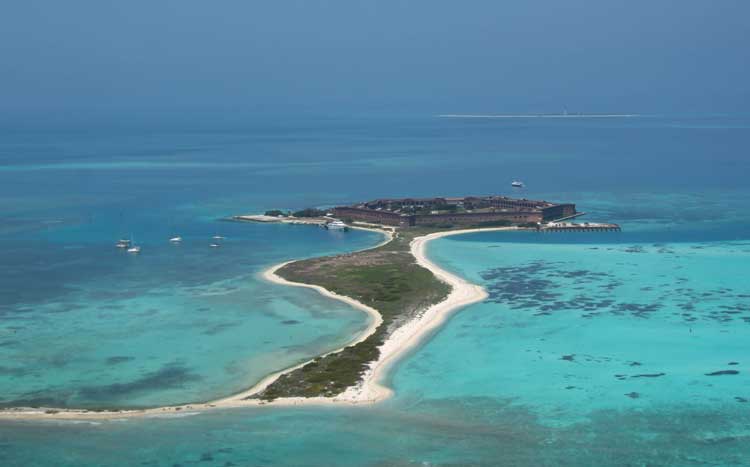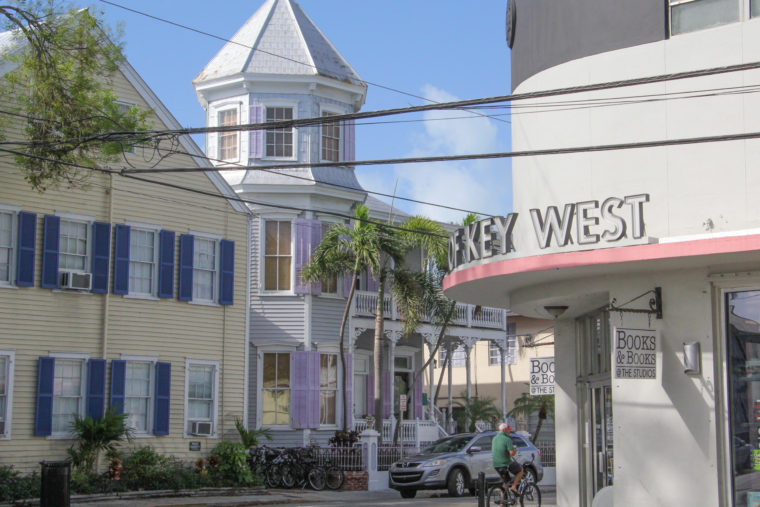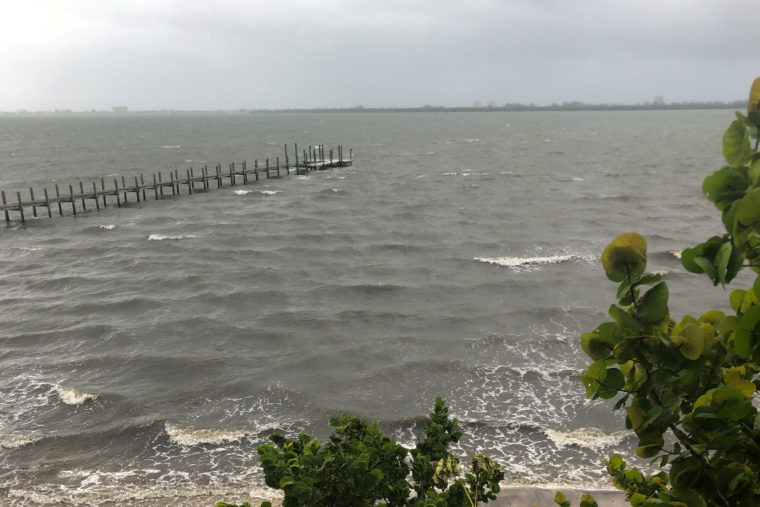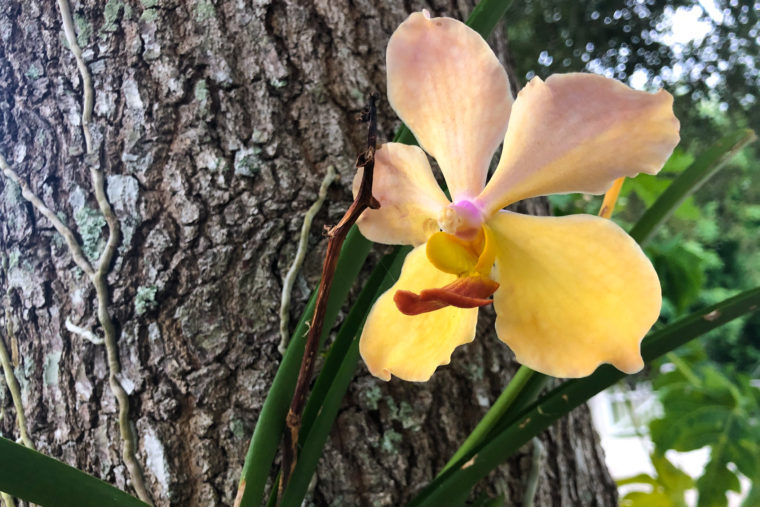Toby’s fishing trip was delayed, and with perfect weather and no other plans, it was high time to visit the Dry Tortugas, a group of islands 70 miles west of Key West, home of Fort Jefferson National Park. It’s one of the most remote national parks, only reached by boat or seaplane. A ferry heads there from Key West each day, but I stumbled upon Landmark Aviation’s seaplane trips. It’s only a 40-minute flight, versus 2 1/2 hours on the ferry. Although the flight costs more, you spend more time at the park and less time getting there, plus you get some time there without the crowds from the ferry. We headed to the Key West airport the next morning.
It’s one of the most remote national parks, only reached by boat or seaplane. A ferry heads there from Key West each day, but I stumbled upon Landmark Aviation’s seaplane trips. It’s only a 40-minute flight, versus 2 1/2 hours on the ferry. Although the flight costs more, you spend more time at the park and less time getting there, plus you get some time there without the crowds from the ferry. We headed to the Key West airport the next morning.  Little did I know, we’d find out a lot more about that ferry ride by the end of the day.
Little did I know, we’d find out a lot more about that ferry ride by the end of the day. Since it was Toby’s birthday, he got the copilot seat. I was behind him, under the wing.
Since it was Toby’s birthday, he got the copilot seat. I was behind him, under the wing.  And we’re off! Looking out at a beautiful day in Key West.
And we’re off! Looking out at a beautiful day in Key West.
 The seaplane flies low, only about 500 feet above the water, and check out that view. Every shade of turquoise and blue.
The seaplane flies low, only about 500 feet above the water, and check out that view. Every shade of turquoise and blue. These are the legendary fishing grounds of the Marquesas Keys. We could see dozens of sea turtles poking their heads above the water and a couple sharks cruising around. We wore headsets and the pilot gave us some history along the way.
These are the legendary fishing grounds of the Marquesas Keys. We could see dozens of sea turtles poking their heads above the water and a couple sharks cruising around. We wore headsets and the pilot gave us some history along the way.
 Spanish explorers first sailed through here to find the new world. It proved to be one of the most treacherous waterways on earth. Known as the Quicksands, the combination of coral reefs, shallow waters, and violent hurricanes have wrecked ships here for centuries.
Spanish explorers first sailed through here to find the new world. It proved to be one of the most treacherous waterways on earth. Known as the Quicksands, the combination of coral reefs, shallow waters, and violent hurricanes have wrecked ships here for centuries.
 We could see a couple of them. Treasure hunter Mel Fisher found the Atocha, a Spanish galleon that went down in a hurricane in 1622, in the deeper waters of the Quicksands. He recovered over $450 million in gold and silver artifacts from it, more than any other shipwreck found. You can see some of the loot at his museum in Key West.
We could see a couple of them. Treasure hunter Mel Fisher found the Atocha, a Spanish galleon that went down in a hurricane in 1622, in the deeper waters of the Quicksands. He recovered over $450 million in gold and silver artifacts from it, more than any other shipwreck found. You can see some of the loot at his museum in Key West. Before long the Dry Tortugas were on the horizon. Ponce de Leon discovered the islands in 1513 and named them Las Tortugas after all the sea turtles he found there, which were an important source of food for explorers. The word “dry” was added to the name on nautical charts in the 1700s to warn sailors of the lack of fresh water.
Before long the Dry Tortugas were on the horizon. Ponce de Leon discovered the islands in 1513 and named them Las Tortugas after all the sea turtles he found there, which were an important source of food for explorers. The word “dry” was added to the name on nautical charts in the 1700s to warn sailors of the lack of fresh water.
 The US wanted to take advantage of this strategic location to protect coastal waters from invasion. They began construction of a military fort in 1846 that would become the largest brick building in the western hemisphere to this day.
The US wanted to take advantage of this strategic location to protect coastal waters from invasion. They began construction of a military fort in 1846 that would become the largest brick building in the western hemisphere to this day. After decades of work, the fort was never fully completed due to the grueling conditions and remote location. Advances in artillery eventually made this type of military fort obsolete, and it was repurposed as a prison. Its most famous prisoner was Samuel Mudd, the physician who set the broken leg of John Wilkes Booth.
After decades of work, the fort was never fully completed due to the grueling conditions and remote location. Advances in artillery eventually made this type of military fort obsolete, and it was repurposed as a prison. Its most famous prisoner was Samuel Mudd, the physician who set the broken leg of John Wilkes Booth. 
 The fortress is a hexagon of 16 million bricks.
The fortress is a hexagon of 16 million bricks. We walked along the shady, damp corridors under 2,000 arches.
We walked along the shady, damp corridors under 2,000 arches. Some are dripping and bulging with stalactites and stalagmites from years of rainwater seeping through the ceiling.
Some are dripping and bulging with stalactites and stalagmites from years of rainwater seeping through the ceiling. We also walked along the top of the fort on a sandy path, where native plants have taken root. The sun is intense up there, and it beat down on our heads and reflected in our faces from the surrounding water.
We also walked along the top of the fort on a sandy path, where native plants have taken root. The sun is intense up there, and it beat down on our heads and reflected in our faces from the surrounding water. We had a perfect view of the lighthouse on nearby Loggerhead Key.
We had a perfect view of the lighthouse on nearby Loggerhead Key.
 Even a massive brick military fort is no match for the sea. Despite constant repairs and reconstruction, Fort Jefferson is slowly crumbling.
Even a massive brick military fort is no match for the sea. Despite constant repairs and reconstruction, Fort Jefferson is slowly crumbling. The moat surrounding it, built to slow down enemy attacks, also serves as a breakwater, protecting it from rough seas. It’s the main reason the fort survived this long.
The moat surrounding it, built to slow down enemy attacks, also serves as a breakwater, protecting it from rough seas. It’s the main reason the fort survived this long.  We walked around the building on the moat wall, too. It’s like a sidewalk in the sea, right next to fish and snorkelers and big purple sea fans sprouting from its sides.
We walked around the building on the moat wall, too. It’s like a sidewalk in the sea, right next to fish and snorkelers and big purple sea fans sprouting from its sides.
 After rounding the fort several times, I couldn’t wait to dive in that gin-clear water. All the crumbled piles of bricks in the water create perfect habitats for a rainbow of sea life.
After rounding the fort several times, I couldn’t wait to dive in that gin-clear water. All the crumbled piles of bricks in the water create perfect habitats for a rainbow of sea life. Because it’s a national park, people are forbidden to take so much as a shell from the sea floor. I saw so many natural treasures like giant sea biscuits and conchs typically swiped as souvenirs by other divers. I could have spent hours out there.
Because it’s a national park, people are forbidden to take so much as a shell from the sea floor. I saw so many natural treasures like giant sea biscuits and conchs typically swiped as souvenirs by other divers. I could have spent hours out there.  I don’t think that guy ever saw the barracuda swimming with him, right there ↑.
I don’t think that guy ever saw the barracuda swimming with him, right there ↑.
 If you don’t mind rustic camping (no sinks, no showers, no fresh water), you can stay overnight. I’m not a happy camper when it’s 95 degrees in the shade. At the end of the day, I was ready for a short plane ride and dinner in Key West.
If you don’t mind rustic camping (no sinks, no showers, no fresh water), you can stay overnight. I’m not a happy camper when it’s 95 degrees in the shade. At the end of the day, I was ready for a short plane ride and dinner in Key West. Sunset at Mallory Square and Louie’s Backyard were on my mind when the pilot walked by us on the beach with a screwdriver in his hand. I thought, that does not look good. Sure enough, he said, “I hate to tell you this, but I can’t get the plane started.”
Sunset at Mallory Square and Louie’s Backyard were on my mind when the pilot walked by us on the beach with a screwdriver in his hand. I thought, that does not look good. Sure enough, he said, “I hate to tell you this, but I can’t get the plane started.” Nooooo! I was not prepared to stay the night. I drank up most of my water. I packed only one towel for the two of us. Who will feed my cat?
Nooooo! I was not prepared to stay the night. I drank up most of my water. I packed only one towel for the two of us. Who will feed my cat?  Well, lucky for me, the ferry hadn’t left, so we weren’t marooned after all. We climbed aboard the Yankee Freedom and sailed 2 1/2 hours back to Key West. A long ride, but pleasant enough since they serve beer and piña coladas. Landmark Aviation refunded half the cost of our trip. They covered our way on the ferry and had a taxi waiting for us at the dock. We skipped the evening in Key West and headed back to Big Pine Key to feed the cat. Priorities.
Well, lucky for me, the ferry hadn’t left, so we weren’t marooned after all. We climbed aboard the Yankee Freedom and sailed 2 1/2 hours back to Key West. A long ride, but pleasant enough since they serve beer and piña coladas. Landmark Aviation refunded half the cost of our trip. They covered our way on the ferry and had a taxi waiting for us at the dock. We skipped the evening in Key West and headed back to Big Pine Key to feed the cat. Priorities. I can’t wait to go back. I’d still prefer to fly there despite the iffy seaplane. I might even consider camping in cooler months. No matter how you get there, the Dry Tortugas should be at the top of your list for ultimate Florida destinations.
I can’t wait to go back. I’d still prefer to fly there despite the iffy seaplane. I might even consider camping in cooler months. No matter how you get there, the Dry Tortugas should be at the top of your list for ultimate Florida destinations.





Love your post and we are doing the exact same thing in another week!
You’ll have so much fun, Robin! It’s incredible. Next time I’ll spend more time snorkeling and less time hiking around the fort. It’s a lot to see in one trip.
Thank you for refreshing my memories of one of my favorite places. Dropping an anchor off the fort and spending a couple days is really doing it in style. I miss it so much.
That is definitely the way to go! We always wanted to go on Beautiful Dreamer, but the weather never cooperated, and once we got to Key West we were too happy to leave. It’s a loooong sail, but certainly worth it.
How fun! Now I want to go. . .
You definitely should, Nicole! I know you’d love it.